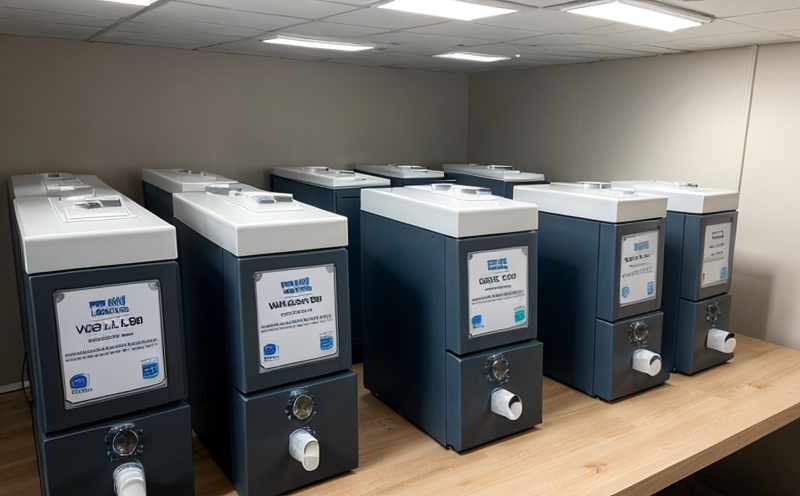AATCC 197 Determination of aldehydes in apparel fabrics
The AATCC Test Method 197 is a widely recognized standard for determining the concentration of volatile aldehydes, including formaldehyde and acetaldehyde, in textile materials. This method provides essential data to ensure compliance with consumer safety regulations, particularly concerning respiratory health concerns associated with formaldehyde emissions.
The protocol involves heating fabric samples under specific conditions that simulate real-world exposure scenarios. The released aldehydes are then trapped in a solution and quantified using gas chromatography (GC). This approach ensures accurate measurement of volatile organic compounds (VOCs) present within the textile matrix, allowing manufacturers to meet stringent regulatory requirements.
The importance of this test cannot be overstated, especially for apparel fabrics where prolonged contact with skin is inevitable. Formaldehyde, in particular, has been linked to various health issues such as eye irritation, allergic reactions, and respiratory problems. By adhering to AATCC 197 guidelines, textile companies can demonstrate their commitment to producing safer products.
The test method also plays a crucial role in quality control processes by detecting potential contamination during production or post-production processing stages. It helps identify any issues that may arise from improper curing techniques or incomplete treatment processes. Regular monitoring ensures consistent product quality across batches and variations within the manufacturing process.
In addition to its regulatory compliance benefits, AATCC 197 serves as an essential tool for research and development activities aimed at improving textile performance while minimizing environmental impacts. By understanding how different chemical treatments affect aldehyde levels, developers can innovate safer alternatives that still meet aesthetic and functional needs.
AATCC 197 requires precise specimen preparation involving cutting samples into standardized pieces followed by conditioning them according to specified humidity and temperature conditions prior to analysis. The apparatus used includes a heated chamber equipped with appropriate sampling ports connected to the GC system.
Acceptance criteria for this test are based on maximum allowable concentrations of aldehydes set forth in relevant national or international standards such as Oeko-Tex Standard 100 and California Proposition 65. Compliance ensures that products do not exceed safe levels deemed harmful by regulatory bodies worldwide.
- Heating the sample at specific temperatures to release volatile compounds
- Trap these compounds with a solution containing reactive agents designed to capture aldehydes
- Analyze trapped compounds via gas chromatography for quantification purposes
- Evaluate results against predefined thresholds established by regulatory authorities
Eurolab Advantages
At Eurolab, we pride ourselves on providing unparalleled expertise in textile testing services. Our comprehensive approach ensures that clients receive reliable results tailored to meet their unique needs.
- Accurate Data: Leveraging state-of-the-art instrumentation and experienced technicians guarantees precise measurements aligned with international standards like AATCC 197.
- Comprehensive Coverage: We offer a full spectrum of textile testing services encompassing physical properties, chemical analyses, durability assessments, and more.
- Regulatory Compliance: Our team stays abreast of evolving regulations to ensure all tests conducted are compliant with current standards.
- Timely Delivery: Efficient project management practices combined with our robust infrastructure allow for expedited turnaround times without compromising quality.
Customer Impact and Satisfaction
The impact of Eurolab's AATCC 197 testing extends far beyond mere compliance; it significantly enhances customer satisfaction by fostering trust through transparent communication about product safety.
- Promotes Brand Reputation: Demonstrating adherence to rigorous testing protocols builds consumer confidence, enhancing brand reputation and loyalty.
- Achieves Regulatory Compliance: Ensures that products meet strict regulatory requirements set by authorities globally.
- Informs Product Development: Insights gained from these tests inform R&D efforts towards creating safer, more sustainable textiles.
Environmental and Sustainability Contributions
Evaluation of aldehydes in apparel fabrics through AATCC 197 contributes positively to environmental sustainability initiatives. It helps minimize harmful emissions released during product lifecycle stages, promoting cleaner manufacturing practices.
By identifying sources contributing to high levels of formaldehyde or other volatile organic compounds (VOCs), manufacturers can implement corrective measures aimed at reducing their ecological footprint. This proactive approach aligns with broader goals set forth by international organizations focused on promoting sustainable development principles.





